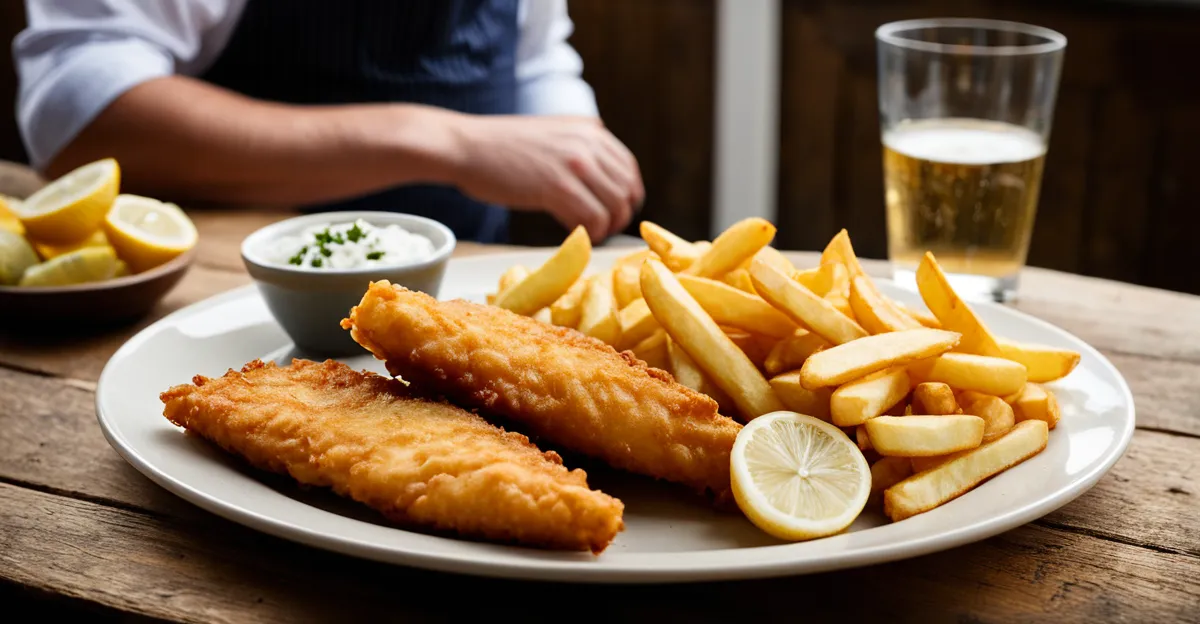Essential Ingredients and Equipment for Authentic Fish and Chips
Creating authentic fish and chips starts with selecting the right ingredients for fish and chips. The best fish for fish and chips is traditionally flaky white fish like cod or haddock. Their mild flavour and firm texture hold up well to frying, ensuring a crispy, tender bite. For the batter, essential ingredients include plain flour, baking powder, cold beer or sparkling water, and a pinch of salt. These components produce the signature light and crispy coating essential for true fish and chips.
Equally important are the ingredients for the chips—typically large, starchy potatoes cut into thick strips—and classic sides like mushy peas and tartar sauce which add balance and tradition to the meal.
In the same genre : How do you make a classic Eton mess with fresh ingredients?
Regarding fish and chips equipment, owning a reliable deep fryer or a heavy, deep pan is vital for consistent frying temperature control. A slotted spoon or wire rack helps remove excess oil, while a thermometer ensures the oil remains in the ideal 175-190°C range. Kitchen towels are handy to drain fried items, preserving crispiness.
Investing in this essential equipment alongside high-quality ingredients for fish and chips lays the foundation for a satisfying homemade fish and chips experience.
In the same genre : How can you prepare a traditional English trifle for dessert?
Preparing the Perfect Fish: Step-by-Step Batter and Cooking Guide
Achieving crispy fried fish at home starts with mastering how to make fish batter that is light yet robust enough to cling to the fish. Begin by mixing plain flour, baking powder, a pinch of salt, and cold beer or sparkling water to create a smooth batter. The carbonation in beer or sparkling water introduces tiny bubbles, resulting in a delicate, crunchy texture when fried.
Before dipping, ensure the fish fillets—preferably the best fish for fish and chips like cod or haddock—are properly portioned and thoroughly dried. Moisture on the fish surface prevents the batter from adhering and causes oil splatter during frying. Patting the fillets dry with kitchen towels is essential to help the batter stick evenly.
When frying fish at home, maintain the oil temperature between 175-190°C (350-375°F) using your fish and chips equipment, such as a thermometer and deep fryer. Fry the battered fillets until golden and crisp, typically 4-6 minutes depending on thickness. Removing the fish promptly and draining on wire racks or kitchen towels prevents sogginess and preserves that perfect crispy fried fish texture beloved in authentic fish and chips.
Mastering Homemade Chips: Cutting, Soaking, and Frying
Crafting homemade chips that rival British classics hinges on potato choice and preparation. The best fish for fish and chips deserves equally stellar chips. Opt for starchy potatoes like Maris Piper or King Edward; their texture ensures a fluffy interior and crispy exterior. Cut into thick, even strips to allow thorough cooking and a satisfying bite.
How to fry chips properly begins with soaking the cut potatoes in cold water for at least 30 minutes. This step removes excess starch, preventing chips from clumping and helps achieve optimal crispiness. After soaking, dry the chips thoroughly to avoid dangerous oil splatter during frying.
Double frying is essential in a British chips recipe. Start with frying at a lower temperature, around 140°C (285°F), until the chips are cooked through but pale. Drain and cool them, then finish by frying at a higher temperature, approximately 180°C (355°F), to create a golden, crispy exterior.
This method plus proper fish and chips equipment like a deep fryer and thermometer will yield classic, crunchy chips that make the meal complete. Mastering these techniques ensures that your homemade chips match the crispness and texture of those found in a traditional British chippy.

